What's New
Displaying results 2701 - 2710 of 4052
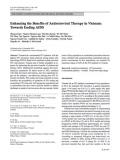
Resource | Publications,
Vietnam has a concentrated HIVepidemic, with the highest HIV prevalence being observed among people who inject drugs (PWID). Based on its experience scaling-up robust HIV interventions, Vietnam aims to further strengthen its response by harnessing the preventive benefits of antiretroviral therapy (ART).
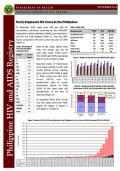
Resource | Fact Sheets,
In November 2014, there were 492 new HIV Ab seropositive individuals confirmed by the STD/AIDS Cooperative Central Laboratory (SACCL) and reported to the HIV and AIDS Registry (Table 1). This was 28% higher compared to the same period last year (n=384) [Figure 1].
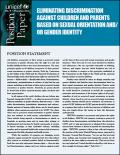
Resource | Publications,
All children, irrespective of their actual or perceived sexual orientation or gender identity, have the right to a safe and healthy childhood that is free from discrimination. The same principle applies to all children irrespective of their parents' sexual orientation or gender identity. Both the Convention on the Rights of the Child and the Universal Declaration of Human Rights make clear that human rights are universal. No person — child or adult — should suffer abuse, discrimination, exploitation, marginalization or violence of any kind for any reason, including on the basis of their real or perceived sexual orientation or gender identity. Similarly, no person should be denied any of their universal human rights, freedoms and basic opportunities.
Further steps should be taken to change attitudes and protect children and families from discrimination based on their sexual orientation and gender identity. Positive social norms that recognize and welcome diversity in cultures around the world should be reinforced to include the recognition, protection and promotion of the human rights of all people, regardless of real or perceived sexual orientation or gender identity.

Resource | Publications,
As the world marks 25 years of the Convention on the Rights of the Child, The State of the World’s Children calls for brave and fresh thinking to address age-old problems that still affect the most disadvantaged children. In particular, the report calls for innovation – and for the best and brightest solutions coming from communities to be taken to scale to benefit every child.
The Convention itself was an innovation that recognized children as people with rights that must be respected equally to the rights of adults. It has helped drive remarkable progress for millions of children, but far too many are still being left behind.
The report highlights how new ways of solving problems – often emerging from local communities and young people themselves – can help us overcome age-old inequities that prevent millions of children from surviving, thriving and making the most of their potential.
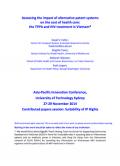
Resource | Publications,
In the Trans Pacific partnership Agreement (TPPA) negotiations, the United States has proposed expanded patent protections that will likely impact the affordability of medicines in TPPA partners. This includes antiretroviral (ARV) medicines used in the treatment of HIV/AIDS. Vietnam has the lowest GDP per capita of the 12 countries participating in the TPPA negotiations. Using the current Vietnamese patent regime as our base case, we analyse the potential impact of alternative patent regimes on access to ARVs in Vietnam.
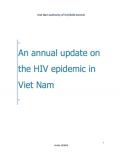
Resource | Publications,
HIV epidemic in Viet Nam is still in HIV concentrated epidemic: High HIV prevalence among people who inject drugs (PWID), female sex workers (FSW), and men who have sex with men (MSM) and low HIV prevalence among pregnant women and military recruits. HIV prevalence tends to decrease in high-risk populations and low-risk populations. Prevention and intervention programs effectively reduce HIV prevalence and risk behavior and increase preventive behavior among populations.
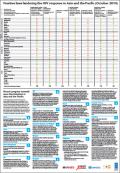
Resource | Reviews and Snapshots,
Recent progress towards zero discrimination in Asia and the Pacific: Punitive approaches to sex work, drug use and sexual relations between men; criminalization of HIV transmission; and enforcement of restrictions on entry, stay and residence against people living with HIV hinder access to HIV prevention and treatment services, and can contribute to the increase of HIV-related stigma and discrimination. Over the past years, over 10 countries in Asia and the Pacific have removed or revised a number of such punitive laws or policies. These actions are helping to enable more people to access HIV services.
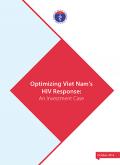
Resource | Publications,
The Investment Case analyses Viet Nam’s HIV epidemic and response, examines the impact and implications of various future scenarios, and establishes priorities that aim to make the response more effective, efficient and sustainable, toward the global goal of Ending AIDS by 2030.
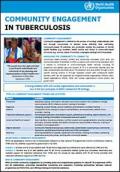
Resource | Fact Sheets,
Community engagement is defined as the process of working collaboratively with and through communities to address issues affecting their well-being. Community-based TB activities are conducted outside the premises of formal health facilities (e.g. hospitals, health centres and clinics) in community-based structures (e.g. schools, places of worship, congregate settings) and homesteads.
Community health workers (CHWs) and community volunteers (CVs) carry out community-based TB activities. A CHW is a person with some formal education who is trained to contribute to community-based health services, including TB prevention and patient care and support. A CV is a community member who has been systematically sensitized about TB prevention and care, either through a short specific training scheme or through repeated contact with professional health workers. Both can be supported by nongovernmental organizations (NGOs), faith-based organizations (FBOs), other civil society organizations (CSOs) and/or the government.
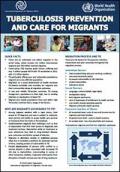
Resource | Fact Sheets,
- There are an estimated one billion migrants in the world today, which include 232 million international migrants and 740 million internal migrants.
- Tuberculosis (TB) imposes great human suffering and loss. 9 million people fell ill with TB worldwide in 2013, with 1.5 million deaths.
- TB particularly affects poor and vulnerable populations; migrants are a key affected population.
- Migration as a social determinant of health increases TB-related morbidity and mortality for migrants and their communities along all migration pathways.





